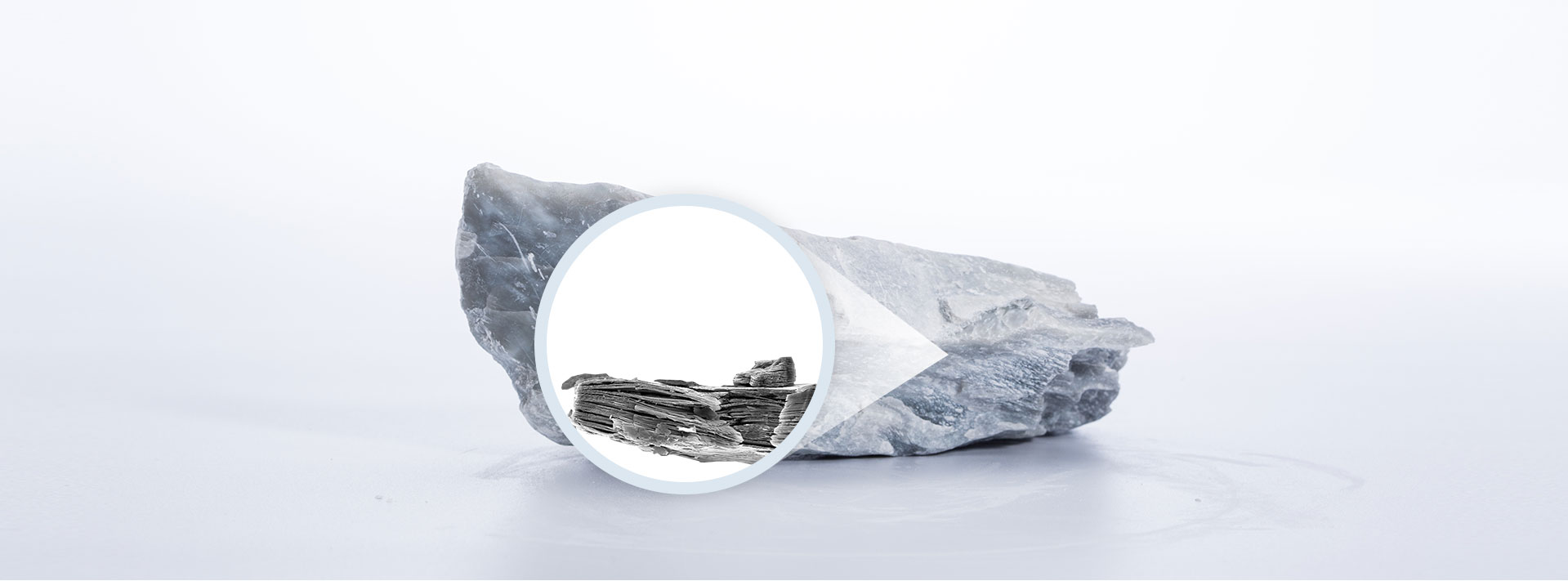
AIHAI Talc
What is talc?
Talc is a hydrous magnesium silicate mineral with a chemical composition of Mg3Si4O10(OH)2. It is the softest known mineral and is assigned a hardness of 1 on the Mohs Hardness scale.
Talc is a monoclinic mineral. It has perfect cleavage that follows planes between the weakly bonded sheets. These sheets are held together only by van der Waals bonds, which allows them to slip past one another easily. This characteristic is responsible for talc's extreme softness, its greasy, soapy feel, and its value as a high-temperature lubricant.
Talc is very lamellar, hydrophobic and chemically inert. It is odorless, insoluble in water and in weak acids and alkalis, but is slightly soluble in dilute mineral acids. Its color ranges from white to grey or green and it has a distinctly greasy feel.
Talc is almost always found in combination with at least one other mineral, the most common ones are chlorite, dolomite and magnetite. Their proportion depends on the geographical origin of the talc ore. Each associated mineral give talc unique properties and functions for particular end use.

Distinctive Feature
Stability: hydrophobic and chemically inert, not soluble in water.
Low Mohs Hardness: softest mineral on earth, slippery feel, low abrasive.
Lamellarity: barrier property, dimensional stability.
Organophilic: affinity for certain organic chemicals and absorption properties are key in a number of applications.
Distinctive Feature
Stability: hydrophobic and chemically inert, not soluble in water.
Low Mohs Hardness: softest mineral on earth, slippery feel, low abrasive.
Lamellarity: barrier property, dimensional stability.
Organophilic: affinity for certain organic chemicals and absorption properties are key in a number of applications.
